Overview of organic software store
Biomimic interaction
The Organic Software Store is a speculative concept offering an alternative for downloading daily applications that prioritize real-world connections over deep immersion in software. This project challenges the prevailing paradigm of complete control in intelligent interfaces designed to assist us in navigating daily life. Beyond the dominant narrative of efficiency between us and technology, the Organic Software Store and its six examples illustrate a narrative of connection between us and the environment. Biomimicry, as an approach in this project, offers a more-than-human perspective to inspire new experiential narratives in interaction design. By integrating the designer's personal beliefs about co-living in the future, this project demonstrates how to involve nature as a stakeholder in participatory design processes, aiming to illustrate a healthier relationship between humans, nature, and technology.
Project information
Life is full of navigation, and the interface we hold is like a compass. As technology devices increasingly become integral to our daily lives, defining the user experience with software also shapes our lifestyle and our relationships with other humans and non-humans involved in the software's development. In a society driven by techno-determinism and a relentless pursuit of efficiency, where time and cost are paramount, what does the future hold for human existence and the role of designers?
This project speculates on a future that isn't simply anti-technology or back-to-nature, but rather proposes an intervention aimed at addressing a small, out-of-control vibration, providing an opportunity to hack the predetermined track. It may lead to frictional experiences with the software, but it unpacks richer emotional connections with the environment through that friction. This design practice more focuses on diversifying the user experience by eliciting richer emotions during software interactions.
Methods
The pursuit of complete control implies a predetermined conclusion from a single viewpoint. More-than-human design offers a relevant alternative by incorporating non-human perspectives to reconsider existing experience patterns. This project also expands the definition of biomimicry beyond mere imitation to encompass caring for and coexisting with nature, aiming to foster a balanced and harmonious relationship—a symbiosis with technology both emotionally and functionally. As an exploratory project, its primary goal is to inspire interaction designers to approach design from new perspectives. There is no real client involved; the experimentation revolves around including the Earth as a stakeholder, drawing inspiration from it, and designing with the intent of benefiting the Earth in return.
Result
Inspired by nature’s aesthetics of the out-of-control, this project proposes a bio-recipe for software design. It illustrates how existing interaction patterns could be transformed into organic interaction principles by drawing inspiration from bio-signals. Six corresponding speculative software examples are provided based on this bio-recipe within the context of organic software store.
- TidePost: Crab's behaviour synchronises with the tide, as creatures in the intertidal zone typically forage when the tide is high and seek shelter during low tide. Inspired by this, “Crab” is a social media platform that regulates information intake based on local tide levels. When the tide is low, posts are paused; when it's high, posts come in continuously.
- SunMap: Sunflowers tend to rotate to follow the sunlight, a behaviour observed in many plants that grow towards sunlight to maximise energy absorption for survival. Inspired by this, "Sunflower" is a digital map that always arranges the sunniest pathway, prioritising sunshine exposure over the shortest route to the destination.
- WeatherCountdown: Dragonflies sense the approach of rainy weather through tiny humidity water droplets accumulated on their wings. Many insects have the sensing ability to approximate weather changes by detecting subtle change in the environment. Inspired by this, "Dragonfly" is a weather forecast application that predicts the upcoming weather conditions approximately and provides a countdown to the next weather change.
- CuriousCamera: The deer, a hyper-sensitive creature, is constantly on high alert, reacting to any noise in its surrounding environment. Inspired by this, "Deer" is a home camera security system that reports any environmental change, not only human activity but also occurrences like passing animals and falling leaves.
- WaitChat: In nature, numerous interdependent phenomena exist where one species assists another and gains benefits in return. Fungi, for example, serve as a network connecting trees to exchange information and nutrients, while insects like bees facilitate pollination between flowers. Inspired by this, "Fungi" is a chat application that activates to send out messages only when the camera detects migratory animals.
- FairPhonebook: For maximising the possibility of spreading more pollen, the flower decreases its chemical electronic signal after contact with the bee. This signals to other bees that the flower has already been visited, prompting them to seek out other flowers. Inspired by this, "Bee" is a phone book application that prioritises the contacts you haven't contacted for a long time, encouraging users to reconnect with infrequent contacts.
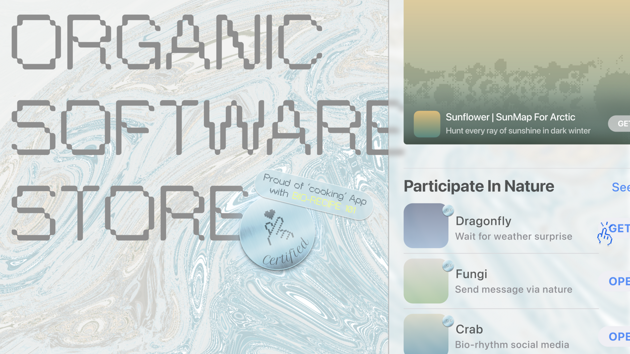
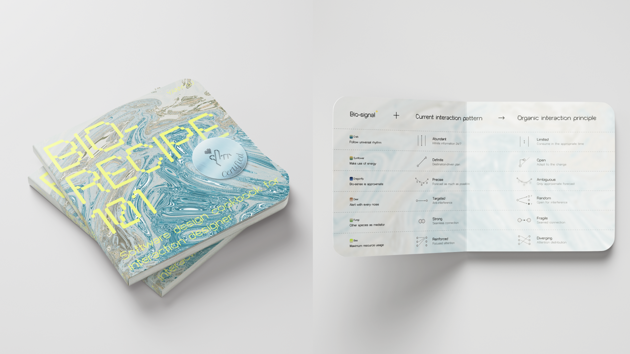
Bio-recipe for software design
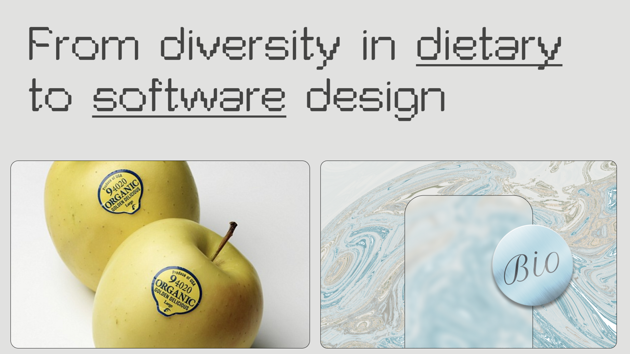
Just as we value diversity in our diets, why not offer a diversity of software design mindsets and lifestyles
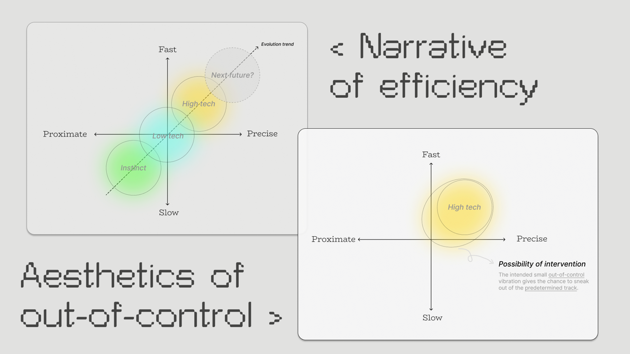
The aesthetics of out-of-control learned from nature provide a possibility for intervention in determined experience models
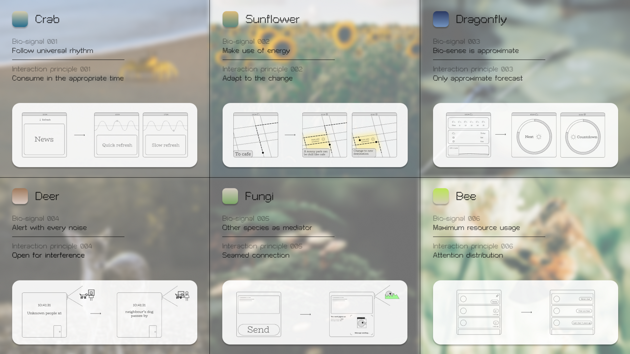
Wireframe – how bio-signals inspire new interaction principles
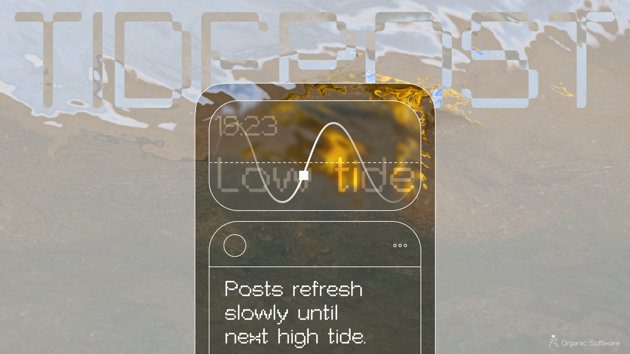
Software01 - ‘Crab’ (TidePost)
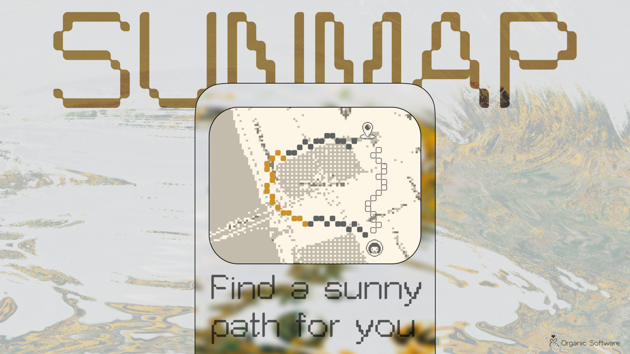
Software02 - ‘Sunflower’ (SunMap)
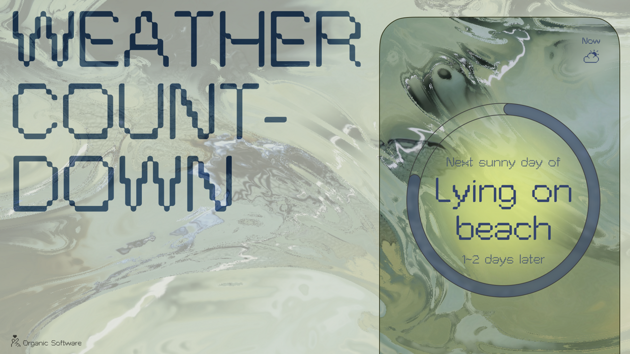
Software03 - ‘Dragonfly’ (WeatherCountdown)
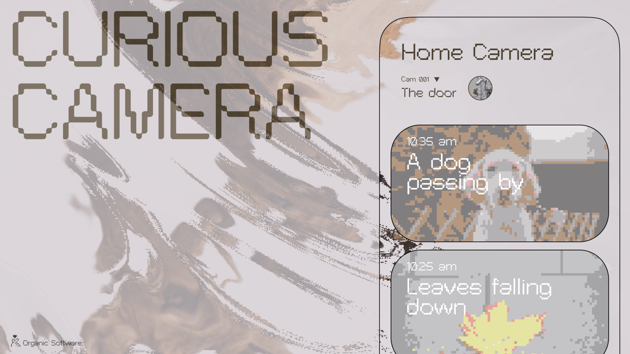
Software04 - ‘Deer’ (CuriousCamera)
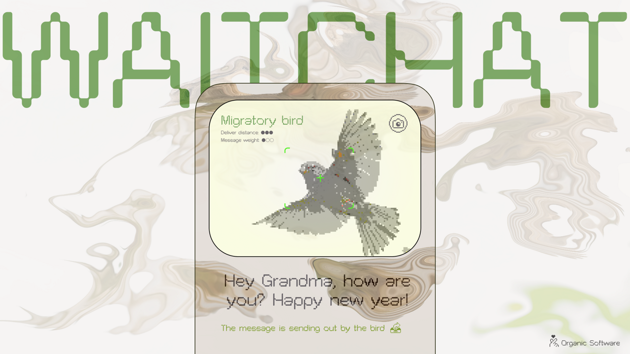
Software05 - ‘Fungi’ (WaitChat)
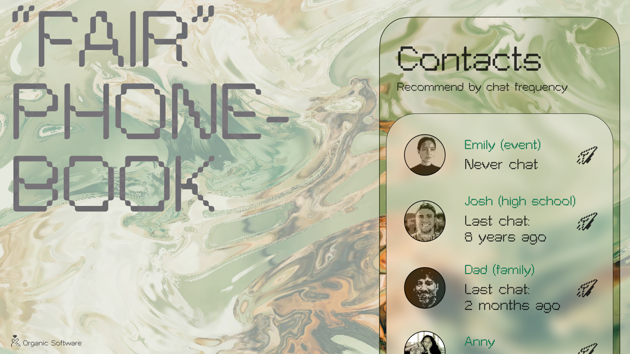
Software06 - ‘Bee’ (FairPhonebook)











